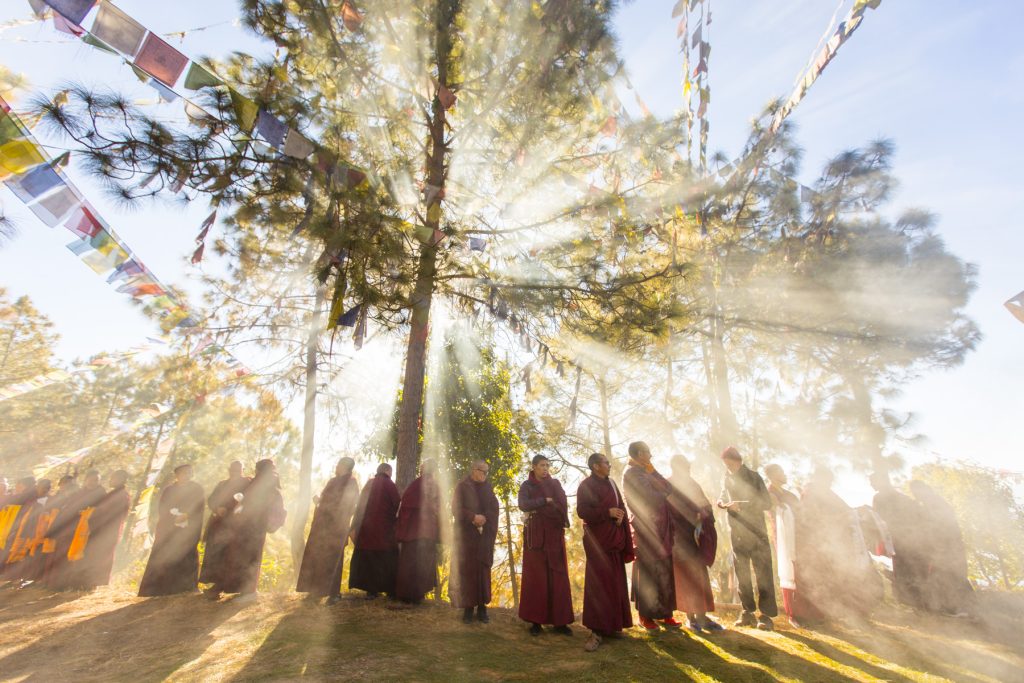For the past several years, photographer Emily Polar has been studying, working, and living in Nepal, where she has documented different Tibetan Buddhist rituals, such as pujas for the deceased and cremation ceremonies. She also photographs Nepal’s dense, fog-covered forests and shape-shifting clouds—all part of an ever-changing landscape that, she says, reflects the transient nature of all phenomena.
Polar first visited Nepal in 2012, and after three years of self-study, she enrolled in Rangjung Yeshe Institute in Boudha, where for two years she studied Buddhist texts, history, classical Tibetan, and Nepali. Polar has since turned her attention back to photography, and she has collaborated with National Geographic Travel as well as nonprofits in Nepal. Her work asks viewers to consider the tension between capturing a moment in time and realizing that the moment, and all that it comprises, is essentially ephemeral.
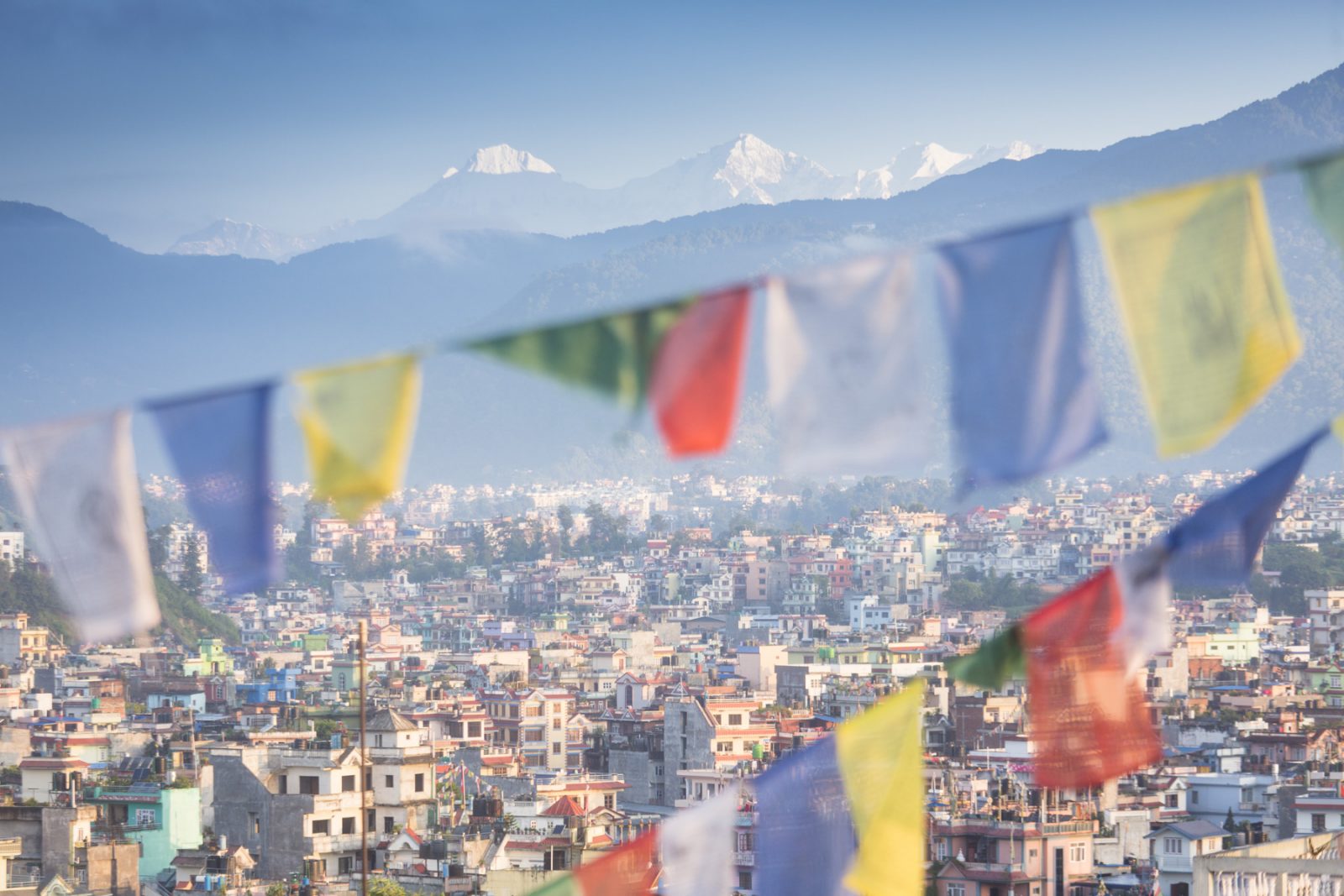
Polar talked with Tricycle about the challenges of documenting sacred sites and rituals without disturbing them, as well as the rewards of exploring presence and impermanence through photography.
Can you talk about your experience of photographing the sacred sites of the 8th-century Buddhist master Guru Rinpoche [Padmasambhava]?
I was commissioned to take photos for a Guru Rinpoche pilgrimage guidebook and website. So I was able to go to all of these sites, including the Maratika Caves [a pilgrimage site next to the village of Mahadevasthan in the Khotang District of eastern Nepal].
There were two caves: the upper cave, which is more popular, and the lower cave. I documented both of them. There were always three or four people practicing in the lower cave. It seemed like they came there every day, and it was quiet.
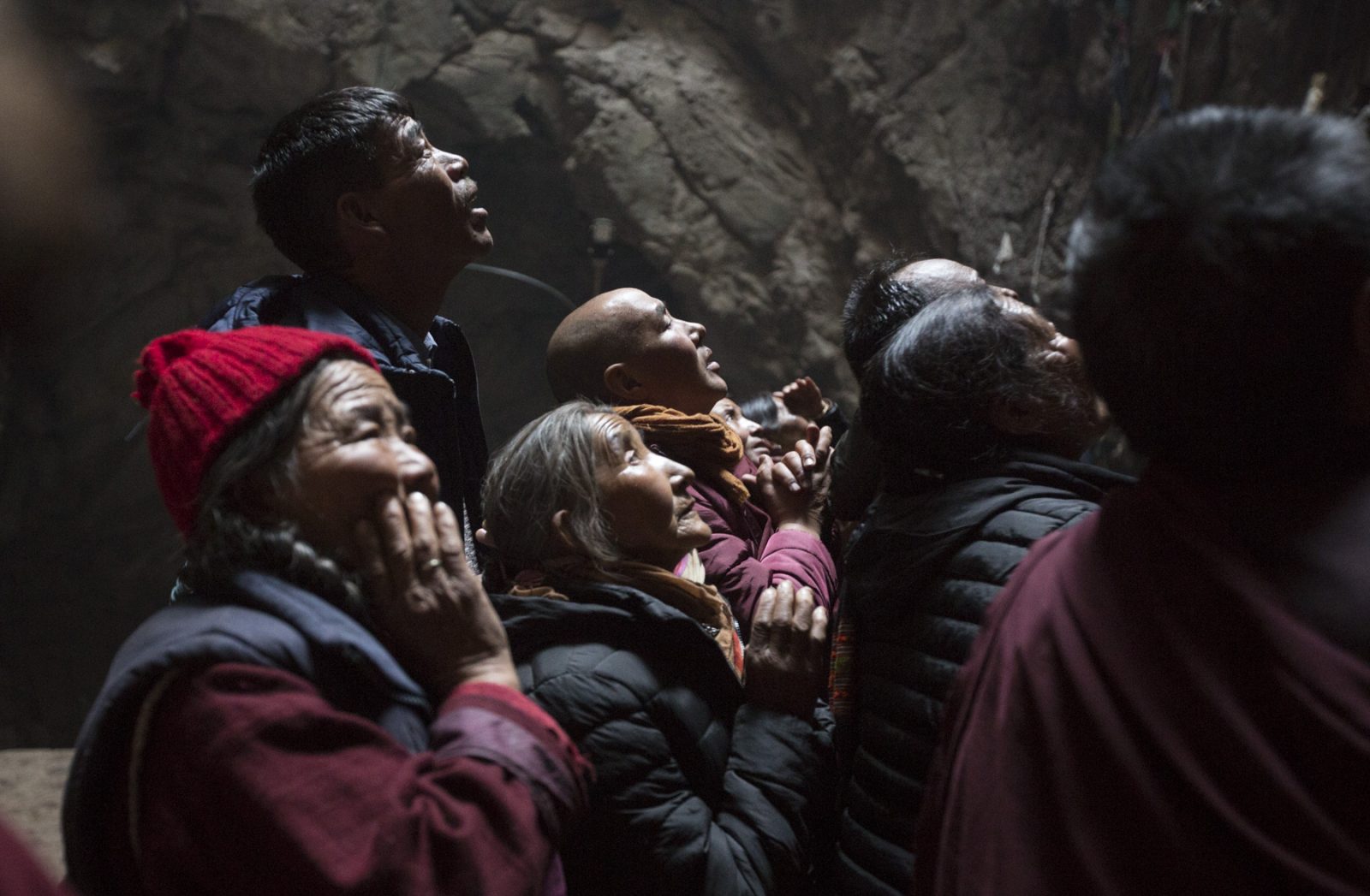
Technically, taking photos was problematic. When I first got to the upper cave, I found out that photography had been outlawed there six months earlier. I talked to a few people in the town, and eventually the two guards who were monitoring the caves told me that I could rush through and take photos. I only had about ten minutes, and because I had to move quickly, I didn’t have a tripod or any special equipment. It was also dark, so I had to use a slow shutter speed, which makes shooting without any blur very challenging. So, to minimize shake, I either held my breath or exhaled as I took the shot. I also put my elbows into my ribs or my hips to make sure that my extremities didn’t move.
I am happy with the images, and also with the experience of it, despite the challenges. I got to be very present with the caves and people practicing there. The caves had this magical light and this big opening and all of these features. There was a lama there, too, who was describing a legend about Guru Rinpoche’s presence in the cave. I saw Guru Rinpoche’s hand and footprints in the rocks and could imagine when, according to the legend, he pushed down into the rocks and flew out of the cave.
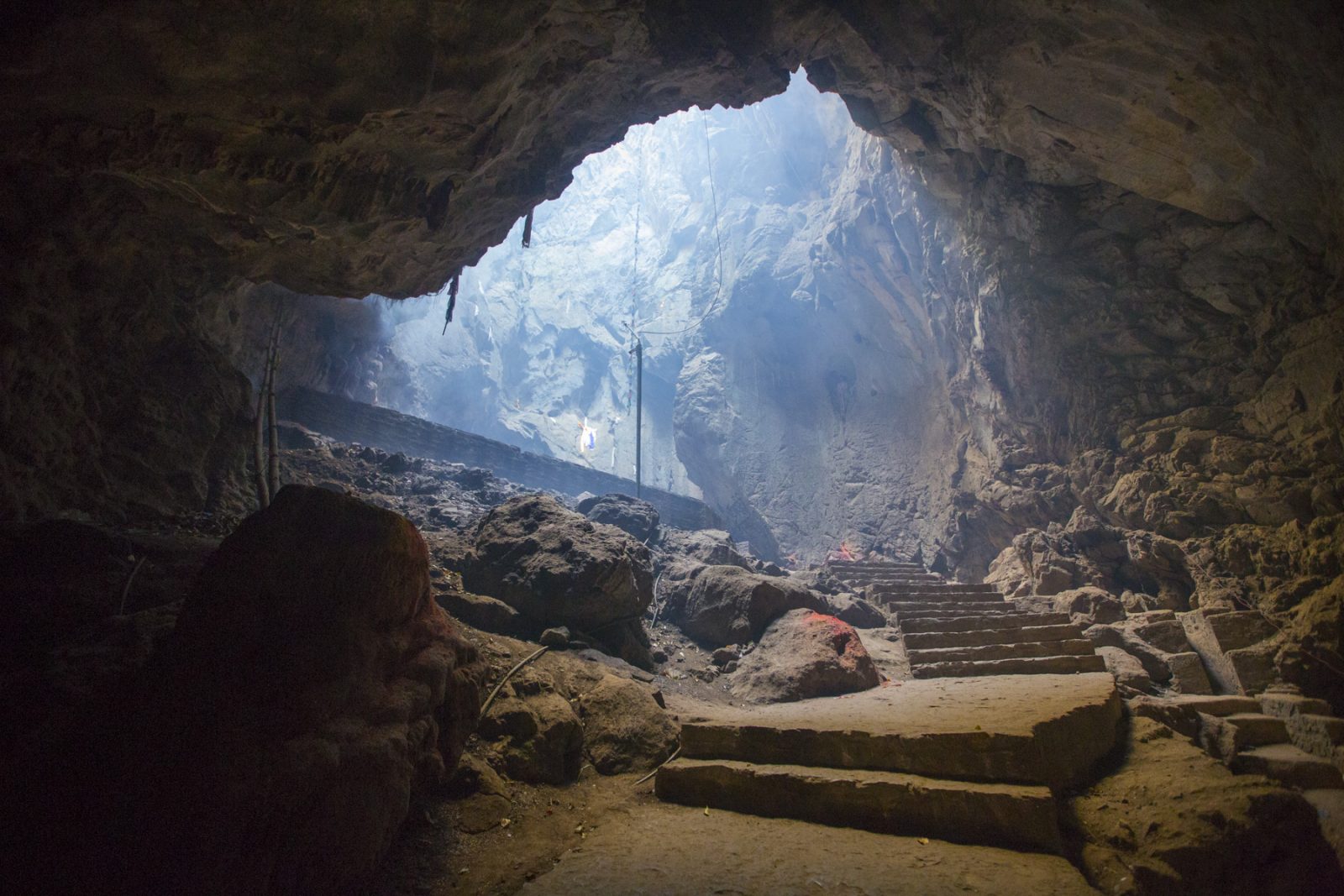
You’ve also photographed different Tibetan Buddhist rituals, or puja, in Nepal. How do you manage your presence during these ceremonies?
In the beginning I just sit and watch. I’ll try to get a feel for what’s happening, and then I’ll start photographing from where I’m sitting. Then I’ll move to the corners and try and not to be in people’s faces. Eventually, I become less timid and I will get closer.
I took photos at the cremation of a local lama who was fairly important. I didn’t know him, but I had a friend who was going to the cremation, so I decided to go, too.
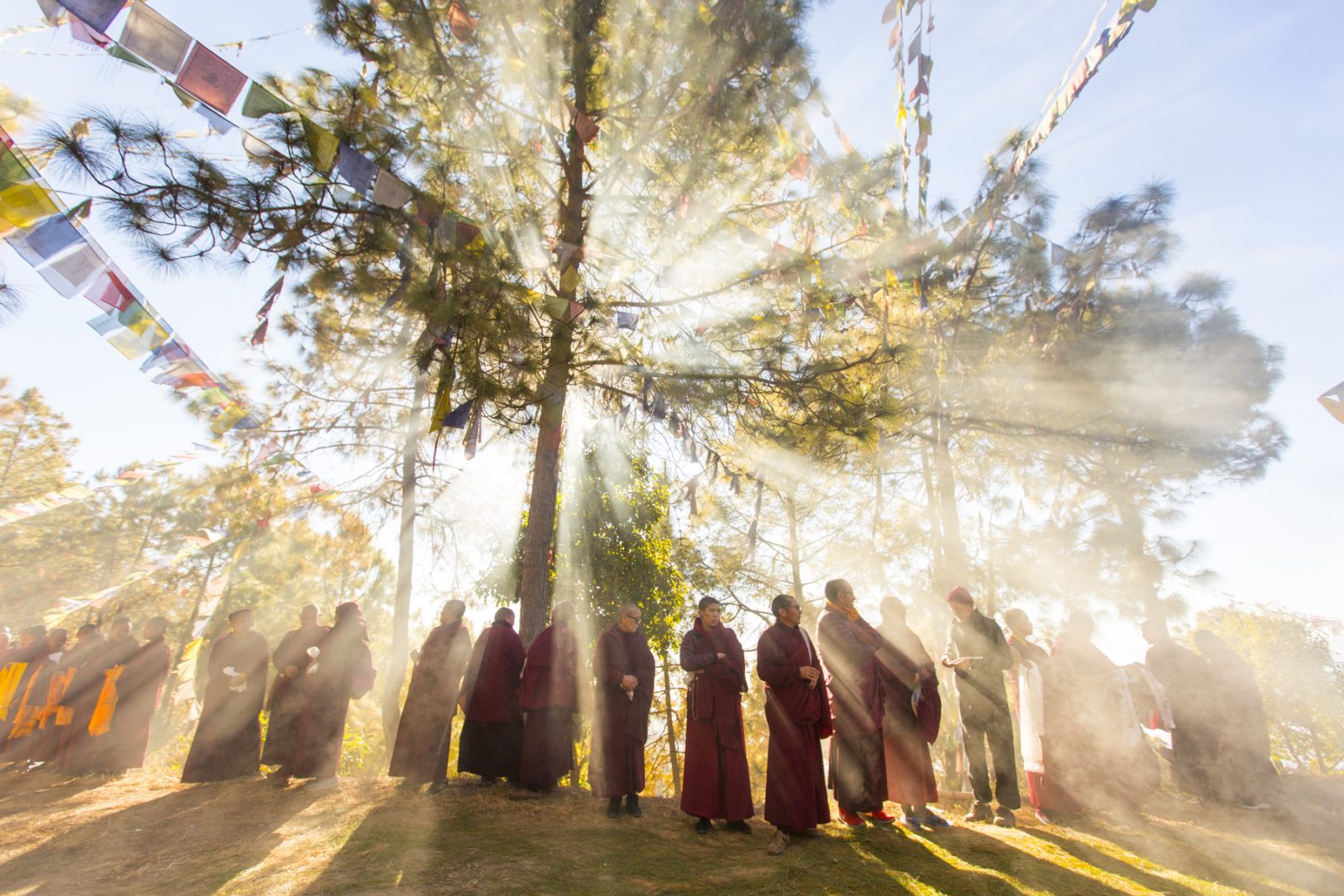
The cremation was down by a river, and there was a dump nearby. There are a surprising number of hawks in Kathmandu Valley, and in this area, between the cremation grounds and the dump, there were tons of them. There were also two pyres, and the lama arrived in a truck, on a chair. He was covered. They carried him to the pyre on a small, pagoda-like structure with a raised platform. They then wrapped fabric around the pillars of the pagoda so people couldn’t see him. After they stoked the fire, though, people started looking over the fabric.
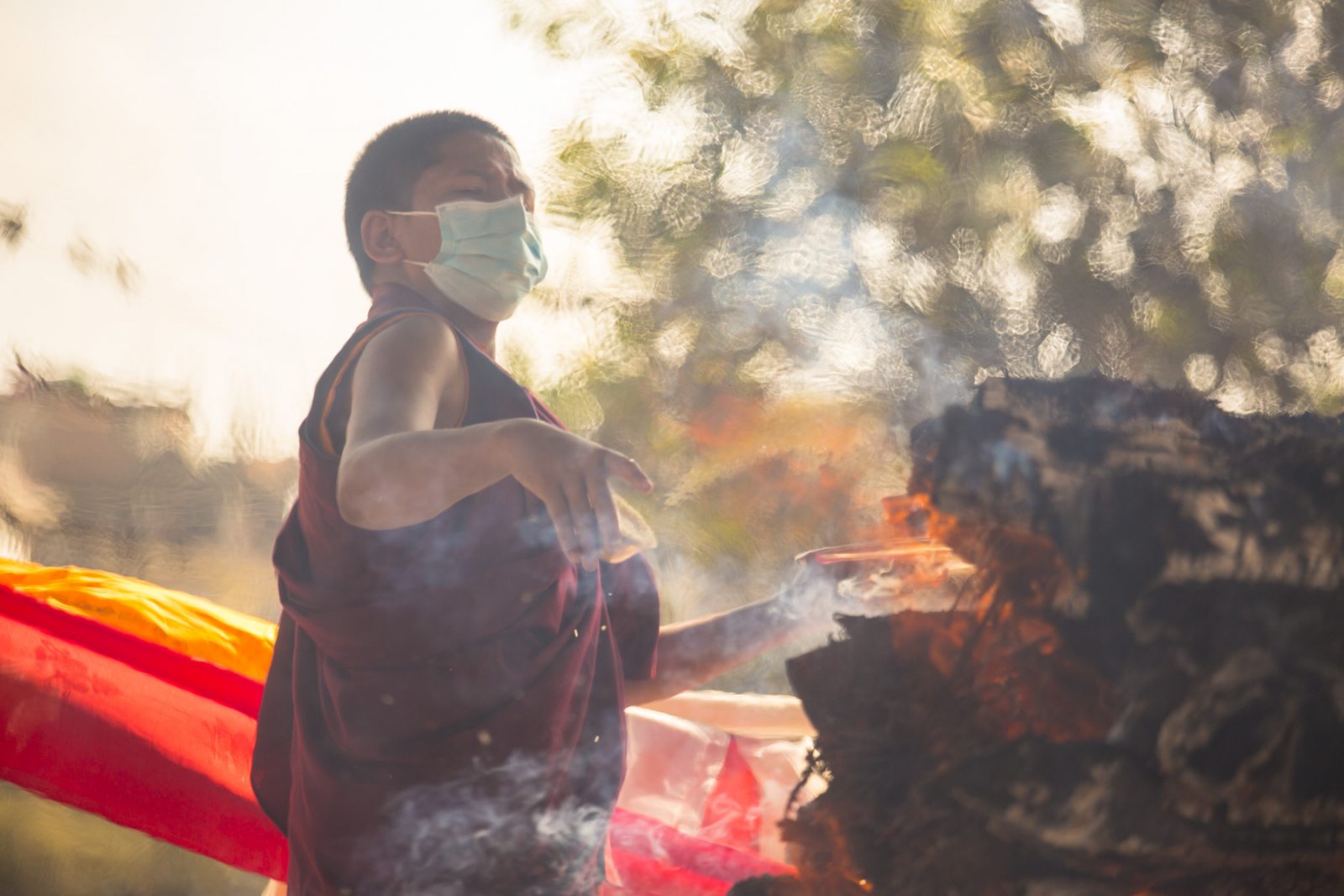
It was very casual, I think, because there is more acceptance [of death]. Close friends and family were there, as well as the sangha. People weren’t bawling. Some people were even laughing and taking selfies, which was refreshing.
After staying back and observing for a while, what I got drawn to was the fire and smoke, and the hawks. Then, toward the end, when the chopa [a practitioner of chod, a Tibetan Buddhist ritual performed at cemeteries and charnel grounds] started singing and dancing, I photographed that through the fire. I’m attracted to these visual elements—anything that has smoke and dust and layers of meaning.
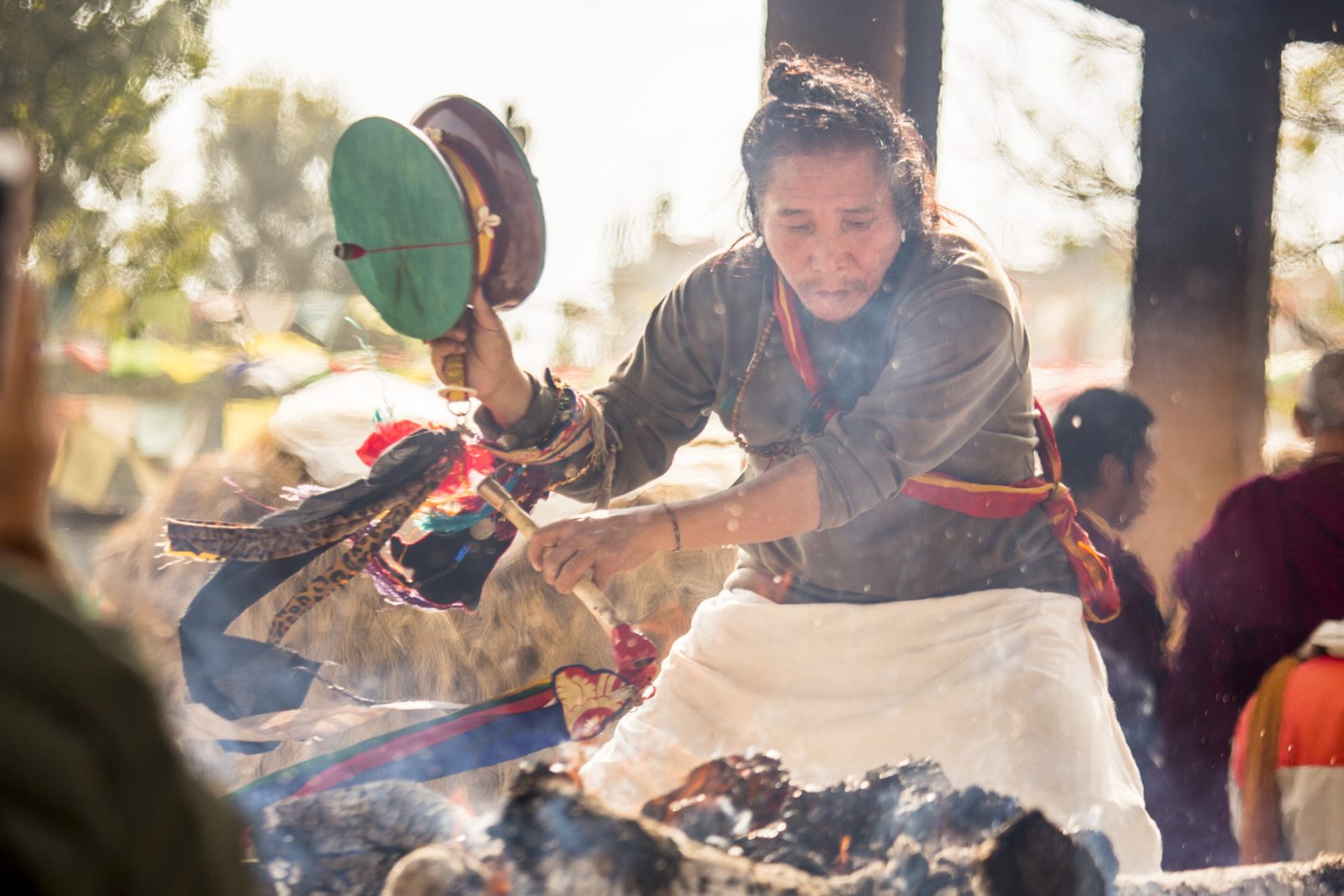
I see similar qualities in some of the photos you’ve taken of Nepalese landscapes, which portray layers of light and fog. What appeals to you about that?
Fog and low clouds and light that shines through them are very interesting to me. That’s where the magic is for me: to be able to see water and moisture in the air. There is so much in the air that we can’t see, and I feel like those conditions and that kind of light can make that appear. It’s almost like space that just comes alive.
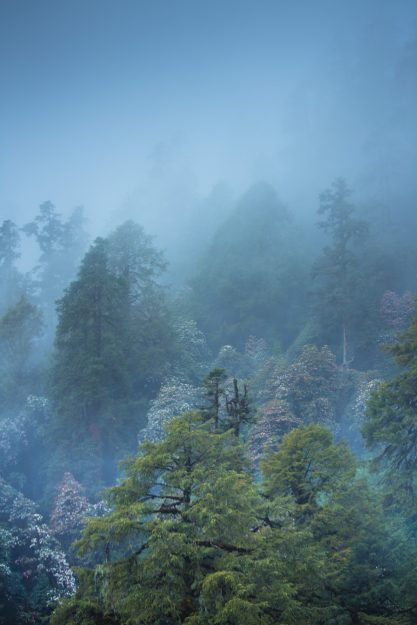
Fog and low clouds also allow for different kinds of tones and contrast that are just not possible if it is sunny. They are also quite an accurate representation of the ephemeral quality of phenomena: they are always changing, impermanent, and empty of a truly existent self.
Thank you for subscribing to Tricycle! As a nonprofit, we depend on readers like you to keep Buddhist teachings and practices widely available.
